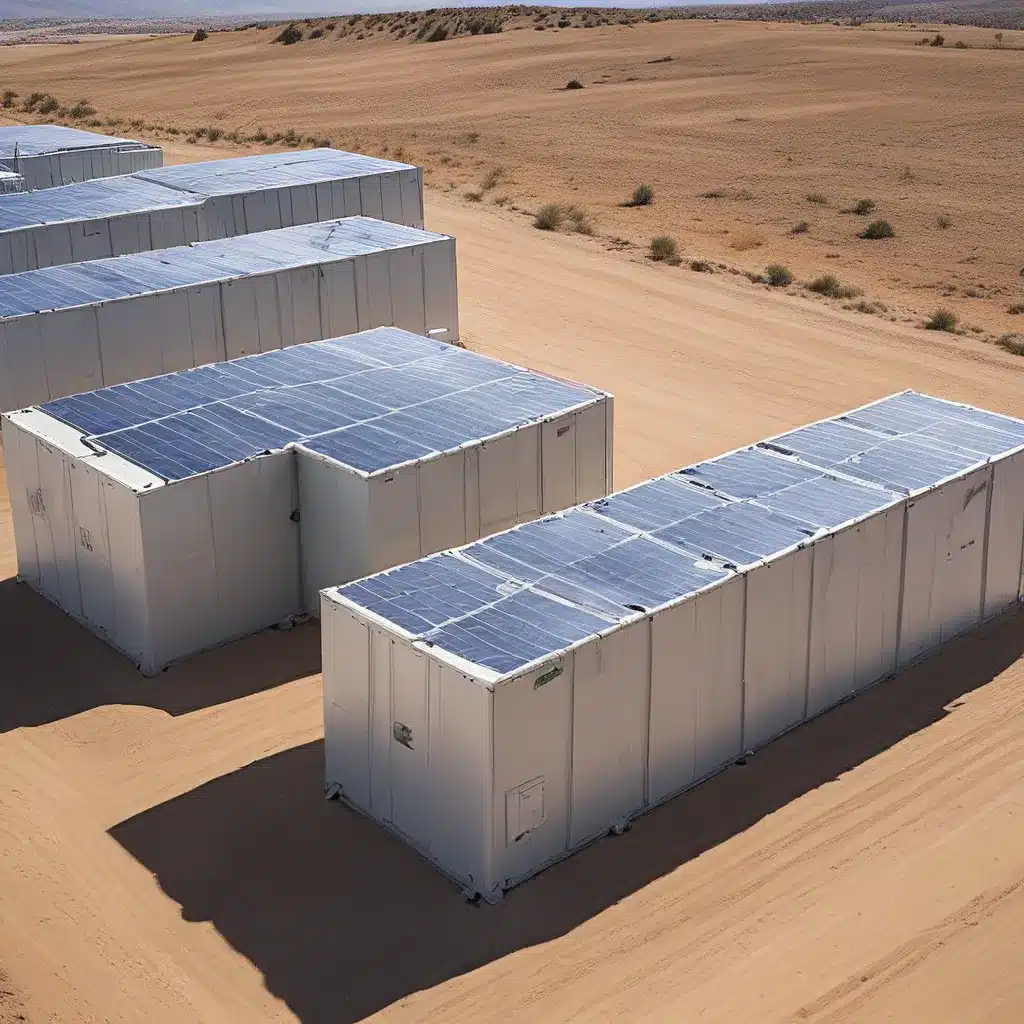
As the world grapples with the pressing need for sustainable energy solutions, the landscape of renewable technologies is evolving rapidly. Gone are the days when the only options were solar panels and wind turbines – the future of renewable energy is far more dynamic and multi-faceted. In this article, we’ll dive into some of the innovative approaches that are rethinking the way we store and distribute renewable energy.
Hydropower’s Comeback: Sustainable Cascades
One of the most intriguing developments in the renewable energy space is the resurgence of hydropower. Now, before you roll your eyes and think “that’s just the same old dam-based hydroelectricity,” let me tell you about a game-changing approach called cascading hydropower.
A company called Natel Energy has been making waves (pun intended) with their novel hydropower system. Instead of building a single, massive dam, they’re envisioning a series of smaller, interconnected hydropower plants along a river. Each node in this cascade features a small hydropower facility and an associated pond for energy storage.
The brilliance of this approach lies in its ability to balance economic and environmental sustainability. As the folks at the National Renewable Energy Laboratory (NREL) found, by coordinating the operation of these multiple hydropower nodes, the impact on natural stream flows can be negligible. In fact, their analysis showed that the revenue reduction from the operational changes needed to achieve these environmental objectives was less than 4%.
NREL played a crucial role in helping Natel rethink hydropower, building a model that quantified the trade-offs between revenue and downstream flow impacts. As Gia Schneider, Natel’s CEO, said, “NREL moved the needle on both fronts—economic and ecological sustainability—by building a model that helped us quantify and understand the trade-offs.”
The beauty of this cascading hydropower approach is that it can provide dispatchable energy storage, meaning the system can be managed in concert to meet energy demand. This makes it a valuable complement to intermittent renewable sources like solar and wind, helping to ensure a more reliable and resilient energy grid.
Rethinking Solar: Collaborative Project Delivery
Another fascinating development in the renewable energy space is the rethinking of solar project delivery. It’s no secret that the traditional approach to building solar farms has been plagued by challenges, from permitting hurdles to supply chain disruptions. But a recent McKinsey report suggests that a collaborative, systems-based approach could be the key to unlocking the full potential of solar power.
The report highlights the importance of integrating the entire solar value chain, from project development and manufacturing to installation and grid integration. By fostering cross-functional collaboration and a shared understanding of the project’s goals, solar developers can navigate the complexities more effectively.
Imagine a future where solar project teams work hand-in-hand with policymakers, local communities, and even other renewable energy providers. It’s a far cry from the siloed, top-down approach that has often characterized the solar industry in the past. And the payoff could be huge – the report suggests that this collaborative model could potentially double the growth rate of solar installations.
Of course, implementing such a radical shift in mindset and practice won’t be easy. But the potential benefits – both in terms of accelerating the adoption of solar power and in creating more sustainable, community-friendly projects – make it a worthy pursuit.
The Energy Storage Revolution
As we transition to a renewable-powered future, the importance of energy storage cannot be overstated. After all, what good are solar panels and wind turbines if we can’t store the energy they generate for when it’s needed most?
Fortunately, the energy storage landscape is evolving rapidly, with a range of innovative technologies entering the fray. From advanced battery systems to cutting-edge thermal storage solutions, the options are becoming increasingly diverse and sophisticated.
One particularly intriguing development is the rise of liquid air energy storage (LAES). This technology involves using surplus renewable energy to cool air down to the point where it liquefies, and then storing that liquid air in insulated tanks. When energy is needed, the liquid air is allowed to warm and expand, driving turbines to generate electricity.
The beauty of LAES is that it can store energy for long durations – potentially weeks or even months – without significant losses. This makes it an ideal complement to intermittent renewable sources like solar and wind, helping to ensure a reliable and resilient energy grid.
But LAES is just the tip of the iceberg. Hydrogen storage, gravity-based storage, and even kinetic energy storage using flywheels are all emerging as viable options for tackling the energy storage challenge.
The key, it seems, is to rethink our approach to energy storage – to move beyond the traditional batteries and embrace a more diverse, interconnected portfolio of solutions. After all, the path to a sustainable energy future is rarely a straight line; it’s a winding journey filled with unexpected twists and turns.
Conclusion: Embracing the Renewable Frontier
As I’ve hopefully demonstrated, the world of renewable energy is undergoing a profound transformation. From cascading hydropower to collaborative solar project delivery and revolutionary energy storage solutions, the future of renewable energy is anything but predictable.
And that’s what makes it so exciting. As we continue to push the boundaries of what’s possible, we’re bound to encounter surprises, setbacks, and serendipitous discoveries. But that’s the nature of innovation – it’s a messy, unpredictable process, and the only way to achieve truly transformative change.
So, if you’re like me and you’re passionate about the renewable energy revolution, I encourage you to keep an open mind, embrace the unexpected, and explore the innovative solutions that are shaping the future. Who knows what other game-changing technologies are just around the corner?

